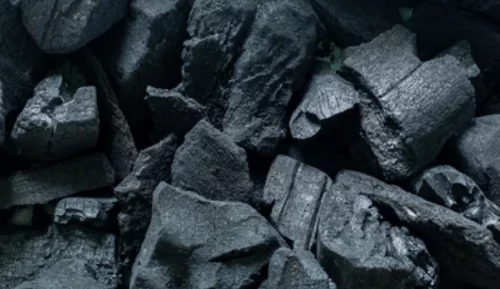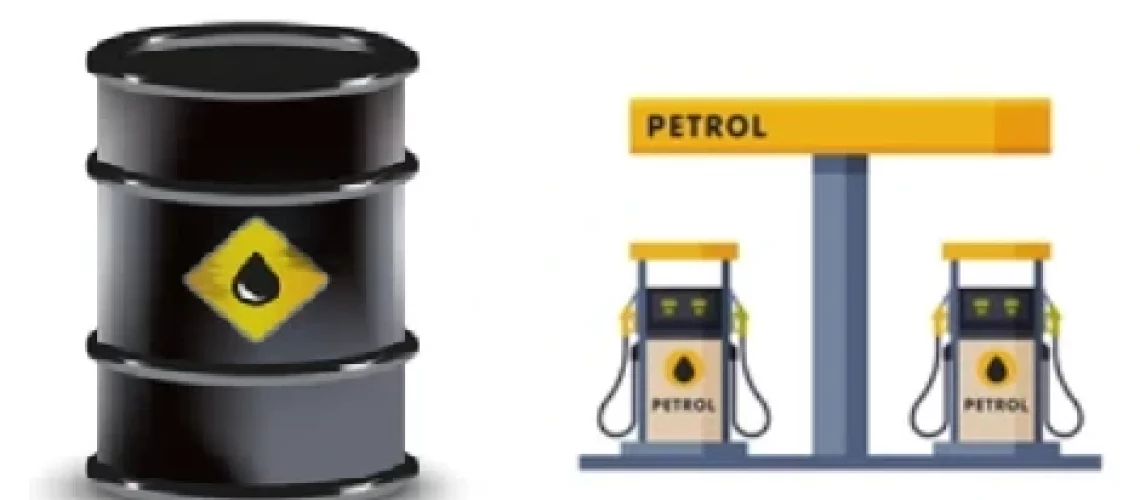When dead plants and animals are compressed and buried for millions of years, they create fossil fuels, a sort of energy source. As a result of the intense heat and pressure present in the earth’s crust, these reserves underwent a slow degradation process and transformed into natural gas, coal, and petroleum over time. These resources are classified as non-renewable due to the extended duration required for their replenishment.
Types of Fossil Fuel
There are three primary types of fossil fuels.
1. Coal
Coal is a sedimentary rock that is either black or brownish-black in colour. It was created from plant remains that formerly grew in marshes and forests millions of years ago. As these plants died and were buried under sediment, heat and pressure over time caused them to transform into the coal we know today. It is primarily composed of carbon, but also contains small amounts of other elements like sulphur, nitrogen, and hydrogen. Coal is the most abundant fossil fuel.

Anthracite, bituminous coal, and lignite are the three main forms of coal. The hardest coal is anthracite, which is greater in carbon content. Lignite has a low carbon content but a high proportion of oxygen and hydrogen. Bituminous coal is a medium-grade kind.
2. Oil
Petroleum, usually referred to as oil, is a type of liquid fossil fuel that is created from the decomposing remains of marine plants and animals that perished millions of years ago. Hydrocarbons, which are molecules formed of hydrogen and carbon atoms, make up the majority of its structure. It is obtained using drilling methods from subsurface reservoirs where it is found. Following extraction, oil is processed to produce a variety of compounds, including gasoline, diesel, and jet fuel, which are used both to power vehicles and to create plastics and other materials.

The quality of oil can vary depending on its location and geological origin. The United States, Saudi Arabia, and Russia are among the world’s major oil producers. Oil, on the other hand, is a non-renewable resource involved with environmental issues such as air pollution and greenhouse gas emissions.
3. Natural Gas
Natural gas is composed of methane, a basic hydrocarbon molecule. It is made of the same organic material as oil but in a different geological environment. Natural gas is found in underground rock formations and is often extracted through a process of fracking, It entails pumping water and chemicals into the rock in order to liberate the gas. It can also be found associated with oil deposits or in coal seams.

Compared to all other fossil fuels, natural gas has a relatively low carbon content and produces fewer emissions when burned. However, the extraction and production of natural gas can have negative environmental impacts, including water pollution, air pollution, and methane emissions, which is a potent greenhouse gas.
Advantages of Fossil Fuels
- Fossil fuels are a reliable source of energy that can be used to meet the demands of modern life. They are available in large quantities and can be easily transported to where they are needed.
- Fossil fuels are often relatively cheap compared to alternative sources of energy. This makes them an attractive option for many consumers, particularly in developing countries.
- Fossil fuels have a high energy density, which means they can store a large quantity of energy in a little amount of area. As a result, they are an efficient means of storing and transporting energy.
Uses of Fossil Fuels
- In many regions of the world, fossil fuels, such as coal-fired power plants and natural gas power plants, constitute the dominant source of electricity generation.
- Fossil fuels are used to power cars, trucks, aeroplanes, and ships, among other forms of transportation.
- Fossil fuels are used in a variety of industrial processes, including manufacturing, mining, and agriculture.
- Fossil fuels are used for heating and cooling buildings, as well as for cooking and other household purposes.
Top References
- https://www.lenntech.com/greenhouse-effect/fossil-fuels.htm
- https://www.e-education.psu.edu/egee102/node/1950
- https://byjus.com/biology/fossil-fuel/





